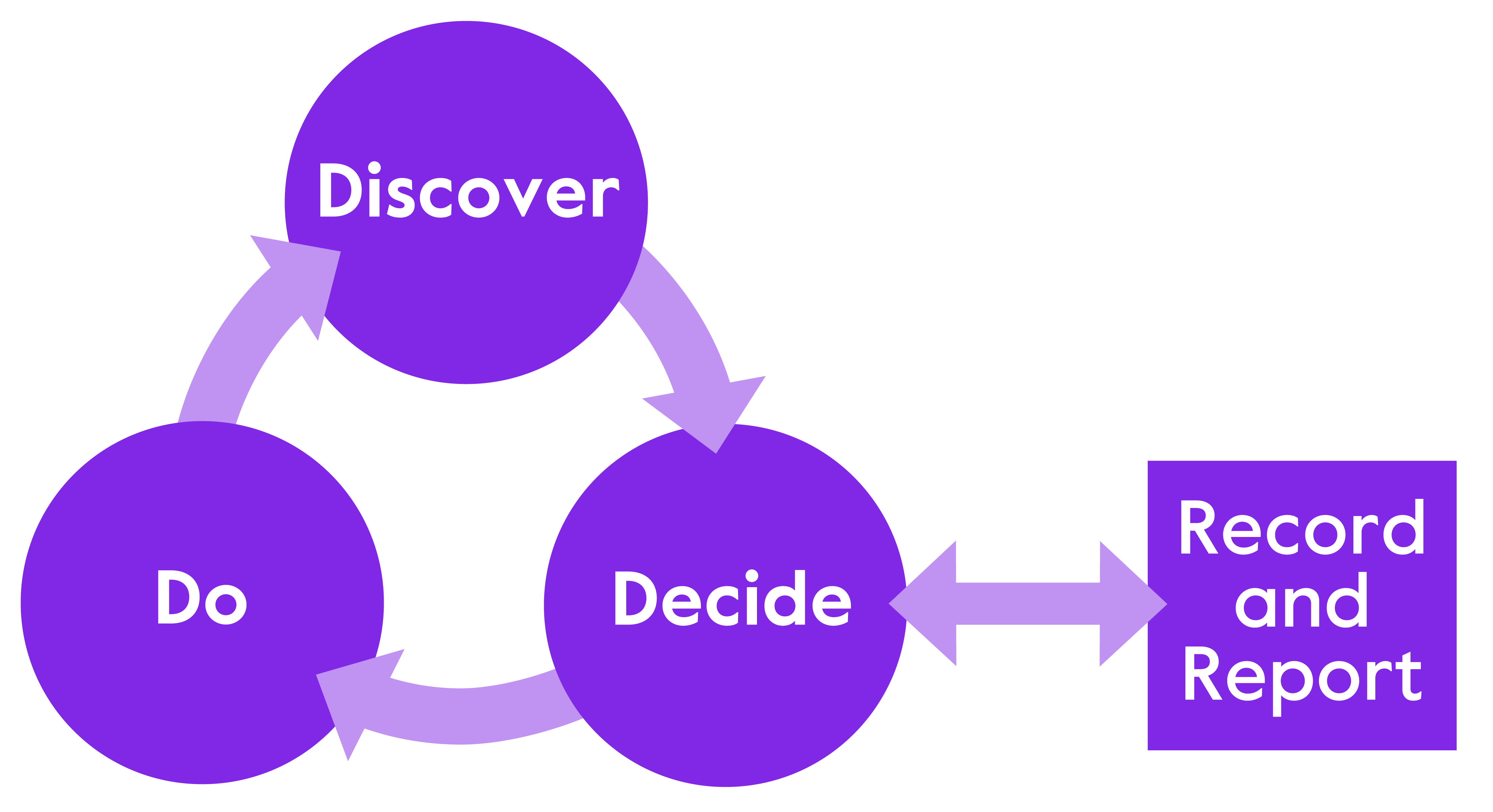Assessment Guidance
Continuous assessment
|
Continuous assessment happens on an ongoing, day-to-day basis. It is the most efficient way to gain evidence about what children can do, what they are interested in and how they interact with others. |
Most of the evidence will be from observing children as they play and take part in activities, although sometimes you will also look at things they make, such as a piece of artwork or some paper with mark making. Each piece of evidence you discover pieces
together like a jigsaw to build a holistic picture of each child. These discoveries can be evaluated using the learning statements in the curriculum, and this will be the basis on which you decide appropriate next steps.
This process can be represented as a cycle of Discover, Decide, Do.
- Discover: What does this child currently do, think, understand and enjoy?
- Decide: What am I going to do next as a result of my discovery?
- Do: I implement my decisions and start the next discovery phase.
Sometimes you will also want to Record and Report.
This process is explained in the following diagram:

This video provides a reflection from a teacher about how they used the continuous assessment cycle to consider the achievement of a particular child:
Video transcript - Continuous assessment
In this section you can find further information on each step of the continuous assessment process: